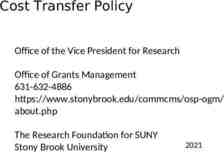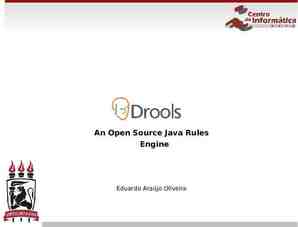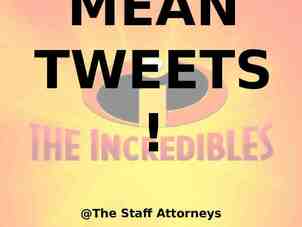DETECTION OF FRAUD Prepared by: Pramod Kumar Jain Faculty in
32 Slides323.50 KB
DETECTION OF FRAUD Prepared by: Pramod Kumar Jain Faculty in RTI Jaipur
CAG’s Regulations and Standing orders in relation to cases of Fraud and Corruption
What is fraud? Fraud is the intentional use of false or misleading information in an attempt to illegally deprive another person or entity of money, property, or legal rights. In order to constitute fraud, the party making the false statement must know or believe that it is untrue or incorrect and intended to deceive the other party. Fraud may be prosecuted as both a criminal and civil offense. Criminal punishments for fraud can include a combination of prison, fines, and restitution to victims
Fraud as a civil wrong In common law jurisdictions, as a civil wrong, fraud is a tort. The remedies for fraud may include rescission (i.e., reversal) of a fraudulently obtained agreement or transaction, the recovery of a monetary award to compensate for the harm caused, punitive damages to punish or deter the misconduct, and possibly others.
Fraud may involve Manipulation, falsification or alteration of records or documents Misappropriation/misapplication of assets. Suppression or omission of the effects of the transaction from records and documents Recording of transaction without substances/material/services Misapplication of accounting policies
What is corruption/corrupt practice ? Corruption is a form of dishonesty or criminal offense or undertaken by a person or organization entrusted with a position of authority, to acquire illicit benefit or abuse power for one's private gain. Corrupt Practice means the offering, giving, receiving or soliciting, directly or indirectly, of anything of value to influence improperly the actions of another party.
Fraud should be distinguished from error: The following actions amount to error and not fraud A mistake in gathering or processing data from which financial statements are prepared. An incorrect accounting estimates arising from oversight or misinterpretation of facts; and A mistake in the application of accounting principles relating to measurement, recognition classification presentation or disclosure.
TYPES OF FRAUD Bribery and Kickbacks: Changes in Original Contracts, Duplicate Payments Collusive or Cartel Bidding Conflict of Interest Defecting of Pricing False Invoices False Representations Splitting of Purchases Phantom Contractor Pilferage of Public Assets Tailored Specifications Supply Orders
Responsibility of Management & Audit The prime responsibility for the detection of Fraud and errors rests with management. Management should strengthen the Internal Control system for achieving the said goals. Audit reviews the system of Internal Control system and suggests the shortcomings observed The Management is expected to document the system established for prevention, detection, response and follow up and reporting of fraud and corruption.
Responsibility of Management & Audit.contd. It should be borne in mind that if a material fraud was perpetrated but not discovered in audit, the conduct of audit personnel can be called in question, particularly if the evidence was such as would arouse suspicion in an auditor of normal prudence. audit personnel need to be aware of the possibilities of fraud at the planning stage and should be vigilant while carrying out the audit work. During audit of financial statements, two types of intentional misstatements areofrelevant the auditor Considerations fraud intoaudit of financial statements (i)Fraudulent financial reporting (ii)Misappropriation of assets
An auditor obtains reasonable assurance that the financial statements taken as a whole are free from material misstatement, whether caused by fraud or error. Fraudulent financial reporting involves intentional misstatements including omissions of amounts or disclosures. It includes Manipulation, falsification (including forgery), or alteration of accounting records or supporting documentation from which the financial statements are prepared Misappropriation of assets involves the theft of an entity’s assets and can be perpetrated by employees as well as management.
Considerations of fraud in performance audits In performance audits, while selecting objectives, sub Objectives and issues, the vulnerability/risk to fraud and corruption should be given due consideration. the effectiveness of internal controls to prevent and detect fraud and corruption should be considered as one of the audit objectives, depending upon the materiality and risk analysis. Some of the significant areas for scrutiny from fraud angle could be the integrity of performance information and evidence of delivery of goods and services.
Considerations of fraud in receipt audit In the audit of receipts, it would be necessary in the case of a department which is a receiver of public moneys to ascertain what arrangements (internal controls) are in place to ensure prompt detection investigation and prevention of irregularities double refunds fraudulent or forged refund vouchers Auditors may also suggest appropriate improvements in the systems and procedures for prevention, detection and reporting of cases of fraud and corruption. Auditors may also suggest appropriate improvements in the systems and procedures
Considerations of fraud in audit of World Bank and other externally assisted projects Audit is responsible for reporting to the funding agency whether the implementing agencies have carried out expenditure on the scheme in accordance with the pattern specified in the project appraisal report relating to the schemes and instructions and to identify matters relating to inadequacies in systems and control. An Auditor should look into inadequacies in systems and control, cases of fraud or presumptive fraud, wasteful expenditure and failure of administration to take corrective action on recommendations contained in earlier report.
Professional skepticism Professional skepticism is an attitude that includes a questioning mind and a critical assessment of audit evidence. It is a skill developed over time and a skill that auditors should constantly build and refine. For example, when considering significant estimates, management should ask: are we considering all relevant information? Are our estimates unbiased? Are there alternative accounting treatments we haven’t considered? Can we justify our selected accounting treatment? Essentially, management should start by asking itself: what questions would we expect our auditor to ask us?
Fraud awareness at the audit planning stage Risk assessment The field offices should carry out an independent risk assessment and prioritize their audit planning accordingly, the audit plans should focus on high risk areas. The auditor may keep in view that the risk of fraud and corruption could be higher in certain organisations like those involved in procurement of goods and services. The auditor should have a complete understanding of the audited entity including the environment in which the entity operates, the level of internal control and the past performance of the audited entity especially previous instances of fraud and corruption.
Identification of areas requiring attention
inventory and / asset management; sanctions/clearances; revenue receipts (for example, incorrect valuation of goods, inadmissible duty draw back claims, misuse of exemptions and notifications regarding refund claims, embezzlement through incorrect accountal of receipts, etc) cash management; Grants (like grants-in-aid to autonomous bodies nongovernmental organisations; for example, the fraud risk includes violation of prescribed conditions in providing and administering grants by the Government Departments or in spending by the recipients, intentional misstatements in financial reporting in order to receive unlawful grants); Financial Statements
Identification of areas requiring attention.Financial Statements operating information (for example, the fraud risk includes overstatement / understatement of accomplishments, progress in meeting performance goals, number of citizens served, programme improvements, compliance with policies, etc.) computerized environment; privatization of public sector functions (for example, the fraud risk includes non-adoption of open competitive process, manipulation of bidding terms and evaluation criteria, etc.), joint ventures, public- private partnerships, etc.;
Vigilance during the course of audit During the course of audit work, the audit personnel should be vigilant and seek explanations, if it comes across possible fraud indicators. Auditors need to be alert to deviations from acceptable accounting standards including disclosure requirements particularly when there is suspicion of fraud and corruption. The auditor may keep in view that when a fraud is conducted there is a deliberate effort to conceal the facts and distract the auditor.
Fraud and Audit Evidence The auditors should clearly understand that the audit evidence obtained can be only persuasive and not conclusive, yet the evidence in case of suspected fraud and corruption ought to be closer to conclusive. While reporting all cases of suspected fraud or corruption, auditor shouldn’t draw any judgment regarding the existence of fraud or corruption but should suggest suspected fraud/corruption or presumptive fraud.
Fraud and Audit Evidence contd. Some of the checks, which could be applied to determine the red flag items during the course of audit, are illustrated below: examine the use of delegation of powers particularly in vulnerable areas; examine the effectiveness and adequacy of internal controls in various areas; check for collusion between the supplier and employees / management; examine cases of misuse of financial powers;
Fraud and Audit Evidence contd. check for false statements and false claims: examine evidence for cartelization, split purchases, collusive bidding, over and under invoicing and making payments on the basis of false progress reports; check for loss of revenue due to evasion and / or nonaccountal or receipt; examine for payment made for services / supplies not received; seek confirmation with other related parties; checking of cross-linking of documents for evidence of known wrongdoing; and cases of misclassification
Audit approach Since complete evidence about cases of fraud and corruption may bot be available to Audit, due care should be exercised in arriving at an audit conclusion. When Auditors suspect the possibility of fraud and corruption, they should establish whether it has taken place and there has been resultant effect on the financial reporting, especially whether the audit certificate requires qualification. When auditors intend to report on fraud and corruption, they should ensure the reliability of audit evidence by verifying it with source documents including third party evidence.
IT FRAUD IT fraud could involved the manipulation of a computer or computer data by whatever method in order to dishonestly obtain money, property or some other advantage of value or to causes losses. Computer provide opportunities for their misuse for economic or financial gains. It fraud are committed by insiders, outsiders, vendors, competitors, etc. Some frauds are committed by manipulation of input, output or throughout of a computer system. Fraud can also be committed by hacking into the system for causing deliberate damage.
Documentation The auditors should collect adequate documentation which may provide evidence during subsequent enquiries, investigations, court cases etc. The documents should includes: The identified and assessed risks of fraud. The results of the audit procedures. Communication about fraud made to management.
REPORTING Initial Reporting Reports of individual cases of suspected/presumptive fraud/ corruption should be addressed confidentially, in the first instances, to the controlling authority concerned with the approval of Group Officers. Copies may simultaneously be sent confidentially to higher authority in cases that are regarded to be so grave or serious. The situations/events that may be suggested of fraud/presumptive fraud should be highlighted in the inspection reports with a recommendation to the executive for detailed investigation and response.
In addition to the reporting to the management of the auditee entity, material/significant cases of fraud and corruption may be reported through separate confidential letters to the specified investigating agency like Central Bureau of Investigation (CBI), Central Vigilance Commission (CVC) in case of Union Government and State Vigilance Commission/Lok Ayukta etc. in case of State Government with the approval of the concerned Accountant General or by him/her, depending upon the seriousness of the cases. In case of financial audit, instances of possible fraud and corruption may require making qualification in the Audit Opinion on Financial Statements, depending upon the materiality of the audit findings. In other cases they may be reported to entity management in a special letter or in the regular inspection reports, depending upon the circumstances.
While forwarding the Bond Copy of the Audit Reports to Headquarters, the AG, PAG etc. should highlighted in the forwarding letter the number of cases of suspected fraud and corruption together with the money value of the concerned paras included in the bond copy. All such cases should be taken up immediately after approval of the bond copy with the appropriate vigilance or investigative authority by the AG even if these cases were reported to them earlier. Such cases should be forwarded to the vigilance or investigative authorities such as CBI, Central and State VC, Lok Ayukta, etc. Through confidential letters with additional information that these cases have been concluded in the CAG’s Audit Report. The reporting to the vigilance or investigative authorities may be completed after approval of the bond copy, without waiting for the availability of printed audit report.
The draft of the annual post-Audit Report letter to the Chief Ministers should contain a brief mention of issues relating to fraud and corruption where such cases appear in Audit Reports. Follow up The filed offices shall institute mechanism for recording in cases of fraud and corruption (including possible indicators of fraud and corruption) noticed during the audit. The AG may send annual confidential betters to the Secretaries of the concerned
The Accountant General may send annual confidential letters to the Secretaries of the concerned Administrative Department indicating the details of the important cases of suspected fraud and corruption.







